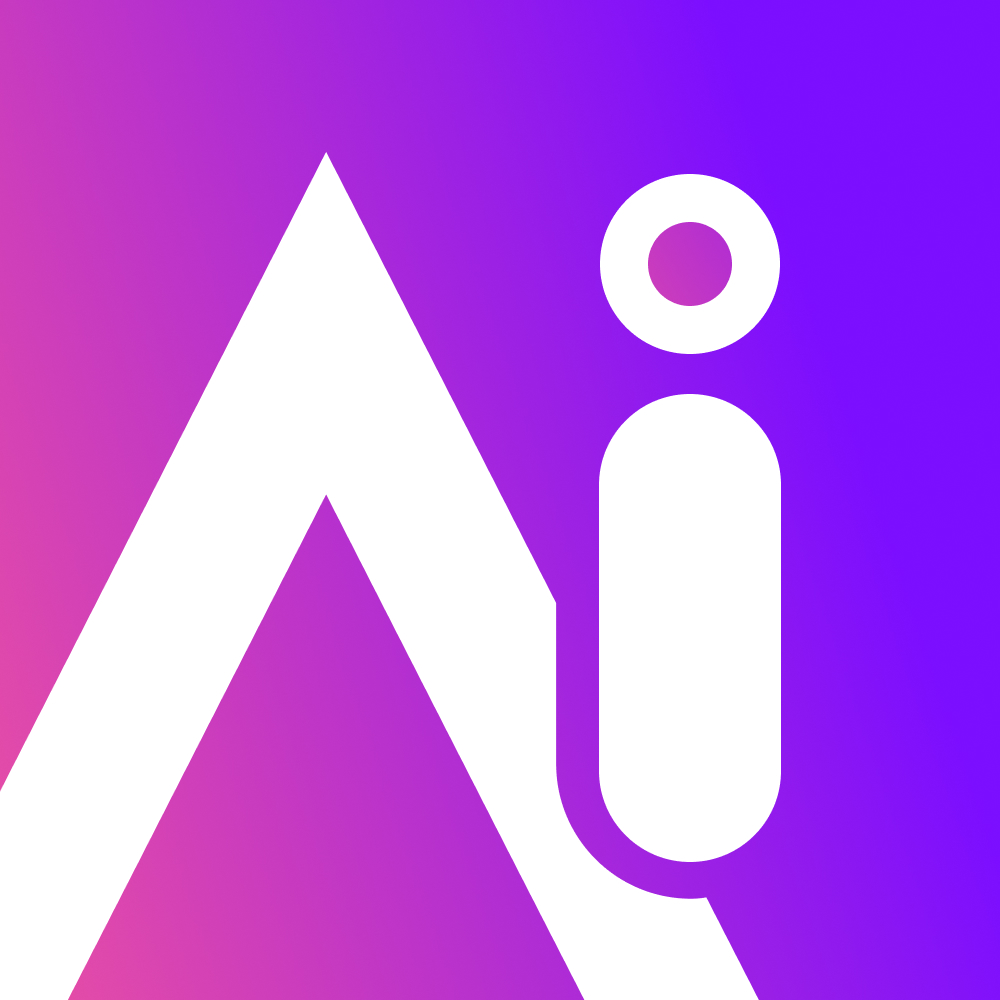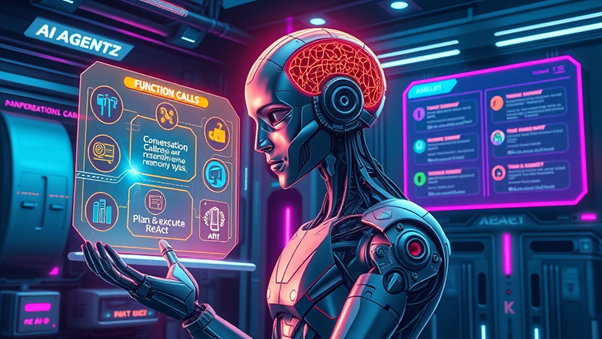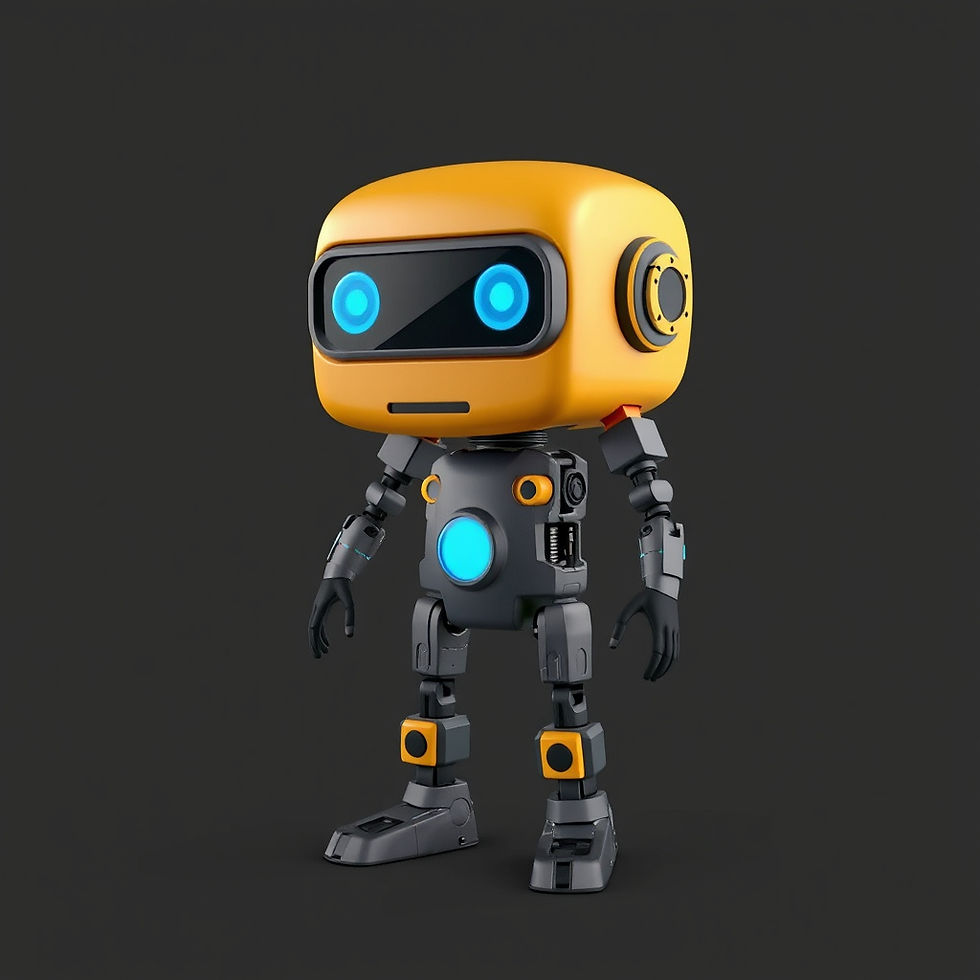Scaling AI Agents: Prototype to Production
- AI AppAgents Editorial Team

- 21 hours ago
- 9 min read
Artificial Intelligence (AI) has grown from an idea in the research labs to a key source of business innovation at lightning speed. Organizations are increasingly turning to AI agents autonomous systems that see their surroundings, decide what to do, and act toward making things more efficient, tailored to individual preferences, and optimized in terms of operations. While developing a proof-of-concept AI agent is fairly easy, scaling experimental prototypes to production AI agents that can function reliably at scale is a sophisticated challenge.

1. Knowing AI Agents
AI agents are autonomous systems capable of perceiving their environment, making decisions, and performing actions to achieve specific goals. AI is reshaping the entire developer experience. It’s no longer enough to be an AI scientist; you must also be an engineer who builds end-to-end, AI-first products. This new reality demands mastering two things: building with AI to accelerate development, and building AI into applications to create smarter products.
1.1 Types of AI Agents
AI agents can be broadly categorized based on their capabilities:
Reactive Agents: React directly to immediate input without using memory or long-range planning. For instance, a basic alert system that reacts on sensor threshold levels.
Deliberative Agents: Have an internal representation of the world and plan their actions on the basis of predictions. For instance, a robotic warehouse vehicle that plans routes in order to move around obstacles.
Learning Agents: Enhance their performance over time by learning from experience with machine learning models. Examples are recommendation systems and autonomous trading bots.
Multi-Agent Systems: Are collections of interacting agents that cooperate or compete to address complex problems, like autonomous drones collaborating in delivery systems.
Prototypes tend to isolate a single agent, but production AI agents need to perform predictably at scale, integrate with enterprise infrastructure, and cope with real-world variability.
2. From Prototype to Production: Key Differences
The journey from prototype to production involves more than just deploying code. Key differences include:
Feature | Prototype | Production AI Agent |
Scale | Small datasets, limited users | Thousands to millions of users |
Reliability | May fail under load | High uptime, fault-tolerant |
Monitoring | Basic logs | Full observability and analytics |
Security | Minimal controls | Enterprise-grade security and compliance |
Deployment | Local scripts or test servers | Containerized, automated, cloud-native deployments |
Maintenance | Ad-hoc updates | Continuous integration and continuous retraining |
3. Scaling AI Agents for Scalability
Scaling AI agents starts at the design stage. Prototypes tend to be monolithic, tightly coupled, and optimized for small-scale experiments. To prepare for large-scale production, agents need to be modular, fault tolerant, and horizontally scalable.
3.1 Modular Architecture
Modular design isolates the AI agent into independent entities so that it is easier to develop, test, and scale them. Core modules generally include:
Perception Module: Processes data like text, voice, images, or sensor readings.
Decision-Making Module: Picks the best course of action based on rule-based logic, machine learning algorithms, or reinforcement learning.
Action Module: Carries out actions in the world, e.g., sending alerts, managing devices, or launching workflows.
Monitoring Module: Monitors performance, faults, and operational metrics for alerting and observability.
Advantages of modularity:
Independent scaling: Heavy-weight components, such as inference or perception modules, can be scaled independently without affecting other modules.
Fault isolation: A failure in one component does not bring the whole system crashing down.
Ease of upgrades: Components are updated or replaced independently.
3.2 Stateless vs. Stateful Design
Stateless Agents: Every request is independent, which provides horizontal scalability by spreading requests across a cluster of servers. This is appropriate for batch operations or recommendation engines.
Stateful Agents: Preserve context between interactions, required for chatbots, virtual assistants, or game AI. Stateful agents need session management, caching, or databases to preserve context at scale.
3.3 Efficient Resource Management
Execution of production AI agents may be resource-hungry. Techniques to minimize performance and cost optimization include:
GPU/TPU acceleration for deep learning inference.
Load balancing to spread requests evenly across instances.
Auto-scaling to align compute resources with real-time demand.
Model optimization: Methods such as quantization, pruning, and knowledge distillation minimize model size and latency.

4. Deployment Strategies for Production AI Agents
Deploying AI agents into production involves planning carefully to provide reliability, scalability, and maintainability.
4.1 Continuous Integration & Continuous Deployment (CI/CD)
CI/CD pipelines enable automated testing, validation, and deployment, minimizing human error and speeding iteration. Best practices are:
Automated unit and integration testing of models and agent logic.
Deployment into staging environments to validate under simulated production scenarios.
Canary deployments: deploying updates to a small user base before wide-scale release.
Rollback processes to enable rapid recovery in the event of failure.
4.2 Containerization and Orchestration
Containerization separates out AI agent components, providing reproducible runtime environments. Orchestration systems such as Kubernetes manage containers, offering:
Horizontal scaling and load balancing.
Rolling updates without downtime.
Fault isolation to avoid failures in one case impacting others.
Example: Running multiple AI agents as microservices each in its own container is scaling perception modules separately from decision-making modules, achieving both optimal performance and cost.
4.3 Monitoring and Observability
Monitoring in real-time is essential for production AI agents. The following are metrics to monitor:
Latency: Time to respond per request.
Throughput: Requests served per second.
Error rates: Rates of unsuccessful or erroneous responses.
Model performance: Accuracy, drift, and adaptation over time.
Monitoring tools such as Prometheus, Grafana, and cloud-native services offer dashboards, alerts, and automated reports, allowing teams to have high reliability.
5. Data Management and Model Training
Scaling AI agents involves having strong data pipelines to manage high volumes of input data. Major points include:
Data ingestion: Structured and unstructured data batch and real-time processing.
Data preprocessing: Cleaning, normalizing, and transforming data to meet model requirements.
Data labeling and annotation: Used in supervised learning models.
Data versioning: Maintaining datasets to allow reproducibility and auditability.
6. Security and Compliance
Production AI agents tend to work with sensitive user information, so security and compliance are of utmost importance. Some of the important practices are:
Encrypting data in motion and at rest.
Putting in place role-based access control and audit trails.
Compliance with regulations such as GDPR, HIPAA, or CCPA.
Using model explainability tools to make AI-driven decisions open and accountable.
7. Scaling AI Agents
While progress is made, scaling AI agents is fraught with challenges:
7.1 Model Drift and Degradation
Prototype-trained models might perform suboptimally during production due to:
Changes in user behavior.
Concept drift in data distribution.
Environmental changes in sensor inputs.
Monitoring, evaluation, and constant retraining are required to ensure high accuracy and reliability.
7.2 Latency and Performance
Real-time AI agents need to react in a timely manner to provide seamless user experiences. Strategies to enhance performance are:
Model optimization and caching.
Distributed inference across multiple nodes.
Load balancing to avoid bottlenecks.

8. Best Practices for Scaling AI Agents
Scaling AI agents is not merely a matter of deploying them on more capable hardware. That is it. By adhering to best practices, agents continue to be reliable, efficient, and responsive as they take on greater workloads.
8.1 Design for Scalability from Day One
Designing AI agents with scalability in mind right from the beginning is essential. This includes:
Modular Architecture: By decoupling the agent into stand-alone modules like perception, decision, and action modules you can scale resource-intensive modules without impacting the rest of the system.
Stateless Design Where Possible: Stateless agents are simpler to distribute among multiple servers, making horizontal scaling easier. A recommendation engine, for instance, can independently process user requests while session data can be kept in a different database.
Flexible APIs and Microservices: Designing microservices out of agents enables them to communicate with other services seamlessly and scale separately, minimizing bottlenecks during production.
8.2 Automate Deployment and Monitoring
Hand-guing deployment causes errors and slows down iterations. Automation provides consistency, reliability, and quicker updates:
CI/CD Pipelines: Make testing, validation, and deployment of AI agent updates automatic. This maintains stability while models are being updated regularly.
Containerization: Docker or equivalent tools isolate agent components so they have consistent runtime environments in development, testing, and production.
8.3 Take Advantage of Cloud and Managed Services
Cloud platforms make it easy to scale by offering elastic infrastructure and managed AI services:
Elastic Compute and Storage: Dynamically scale resources according to demand to avoid bottlenecks or waste.
Managed AI Services: AWS SageMaker, Azure ML, or Google Vertex AI provide platforms where teams can run models without having to handle infrastructure, and scale production AI agents more quickly.
Global Reach: Cloud infrastructure enables multi-region deployment for low-latency user experiences as well as high availability.
8.4 Implement Continuous Learning
AI models also decay over time if not refreshed with fresh data. Use continuous learning pipelines to:
Retrain models with newer data from production on a periodic basis.
Catch concept drift, where data patterns shift and predictions become less reliable.
Keep up with changing user behaviors, seasonality, or operational changes.
8.5 Work Across Teams
Scaling AI agents is a multi-functional task:
Data Scientists: Develop, train, and optimize models.
Software Engineers: Embed AI agents in applications and infrastructure.
DevOps/ML Ops Teams: Manage deployment, scaling, monitoring, and CI/CD pipelines.
Product Managers: Guide AI agents to serve business objectives and user requirements.

9. Real-World Use Cases
Scaling AI agents is not only theoretical, it's already changing industries. Let's see elaborate examples in various domains:
9.1 Customer Support AI Agents
Contemporary e-commerce sites employ chatbots and virtual assistants that:
Process thousands of concurrent user queries on web, mobile, and messaging app platforms.
Forward tricky issues to human agents where needed.
Improve response quality with learning over time through interactions.
Scaling considerations:
Spread traffic over multiple instances of agents to meet peak demand.
Track agent accuracy, response time, and customer satisfaction metrics.
Seamlessly integrate with CRM systems to securely access user information.
Example: Amazon's machine learning-based customer service processes high call volumes during holiday sales, constantly refining responses based on live interaction data.
9.2 Predictive Maintenance in Manufacturing
AI agents track sensors across industrial equipment to predict failures ahead of time.
Primary scaling challenges:
Streaming Data: Thousands of sensors produce ongoing data streams that need to be processed in real-time.
Low-Latency Predictions: Agents need to offer insights quickly enough to avoid downtime.
Compatibility with IoT Platforms: AI agents need to integrate with the installed industrial systems for alarm and scheduling of maintenance.
Through use of modular, cloud-based agents, manufacturers are able to manage thousands of devices in multiple locations in an efficient manner.
9.3 Recommendation Systems for Streaming Platforms
Streaming platforms such as Netflix, YouTube, and Spotify utilize AI agents in the form of personalized recommendations:
Agents scan user preferences, viewing history, and engagement metrics.
Recommendations need to refresh in near real-time to keep pace with changing behavior.
Millions of simultaneous users need to be supported by systems with low latency.
Scaling factors:
Distributed inference pipelines to manage load.
Streaming analytics with real-time data processing.
Continuous retraining with aggregated user behavior data.
9.4 Autonomous Agents in Logistics
AI agents drive autonomous vehicles, drones, and delivery robots:
Agents operate in dynamic environments with several obstacles.
Need to make real-time decisions to provide safety and efficiency.
Typically used in fleets and need multi-agent coordination.
Scaling factors:
Simulation environments for scaled training.
Edge computing to minimize decision-making latency.
Safety mechanisms and fail-safes for deployment in the real world.
10. Future Trends in Scaling AI Agents
The domain of AI agents is changing fast, and new trends are molding how production AI agents will behave:
10.1 Agent Orchestration Platforms
Platforms to orchestrate multiple interacting AI agents facilitate sophisticated workflows, for example, multi-agent coordination in logistics, supply chain management, or automated customer engagement.
10.2 Self-Optimizing Agents
Future AI agents will dynamically adjust their resource consumption and behavior for better efficiency and lower operational expenses without the need for human action.
10.3 Explainable AI Agents
Transparency will be a standard expectation. Explainable AI makes decision-making processes understandable and accountable, particularly in regulated sectors such as finance and healthcare.
11. Final Thought
Scaling AI agents from prototypes to production AI agents is an n-dimensional problem that entails:
Creating modular, scalable architectures.
Automating deployment, monitoring, and continuous learning.
Stepping in unison with enterprise systems and meeting security and compliance needs.
Scaling AI agents, when done properly, translates experimental models into strong, dependable systems that can tolerate real-world complexity, high volumes, and dynamic situations. Organizations that follow these best practices can gain operational efficiency, enhance customer experiences, and unlock new business opportunities with AI.
Ready to Bring Your Ideas to Life?
Whether you’re planning a new AI project, need app development, or want to explore automation for your business, AI AppAgents is here to help. Let’s collaborate to build solutions that drive real impact.
Get in touch:
📧 hello@aiappagents.com | 📞 +91 95501 00002
We look forward to hearing from you!



Comments